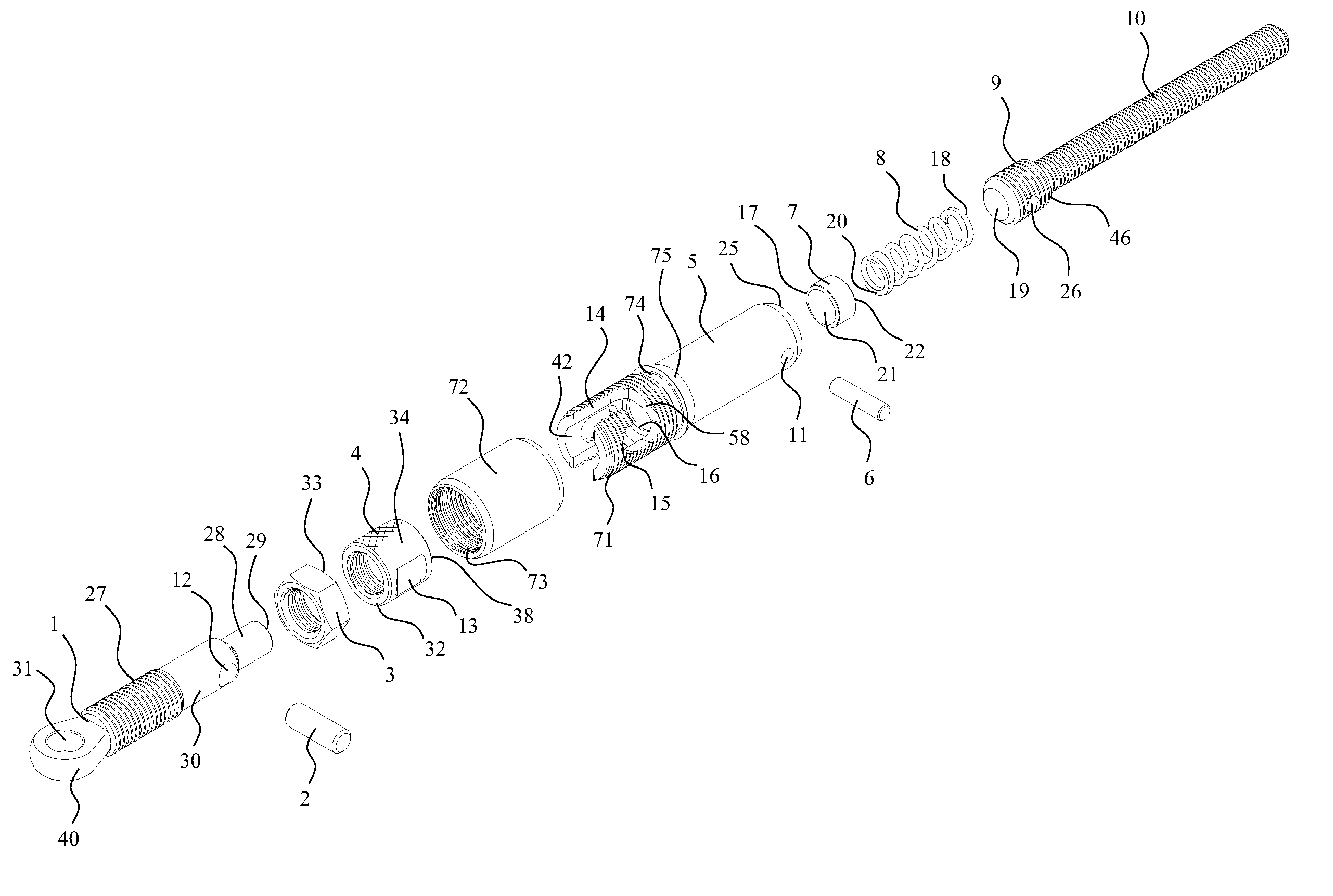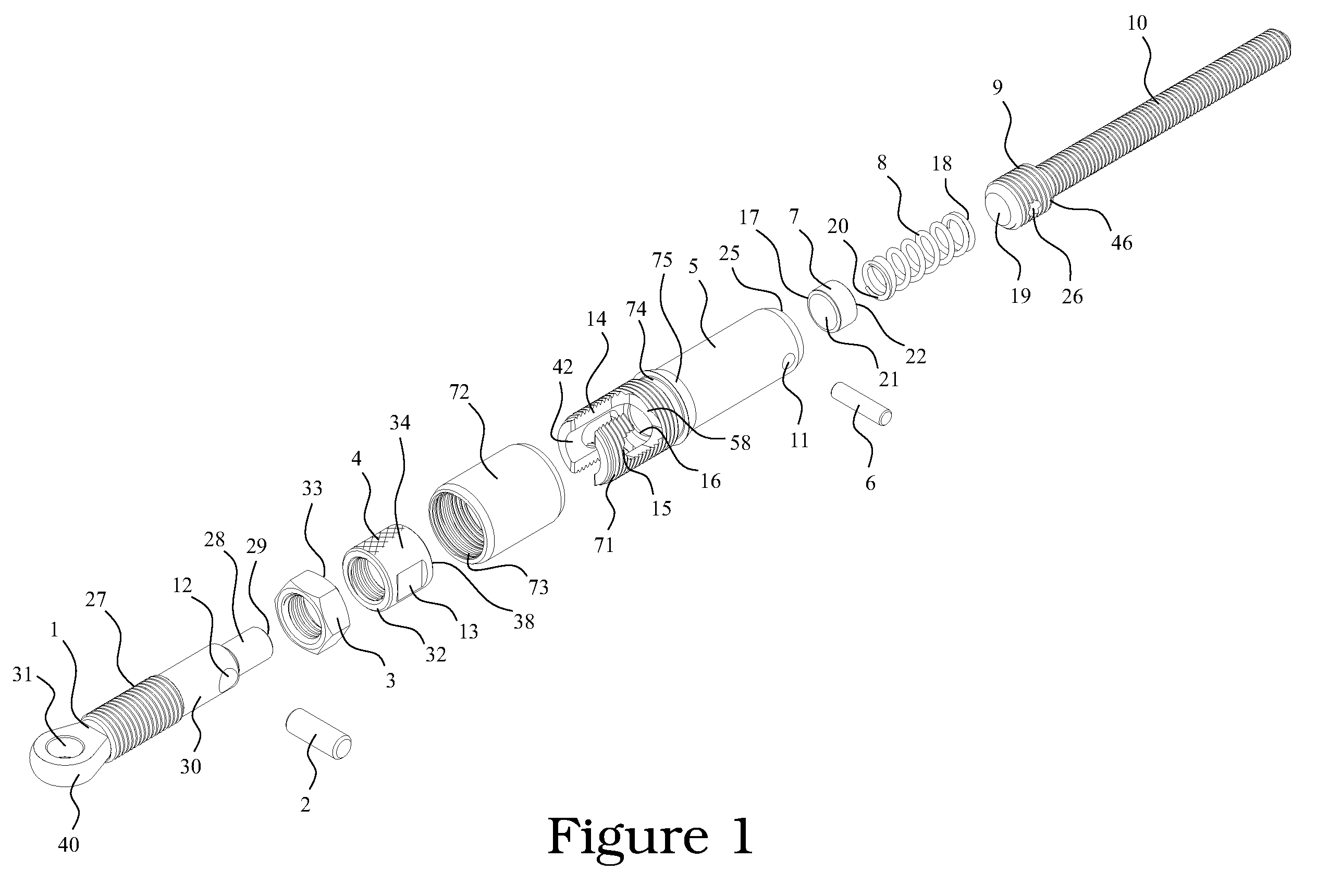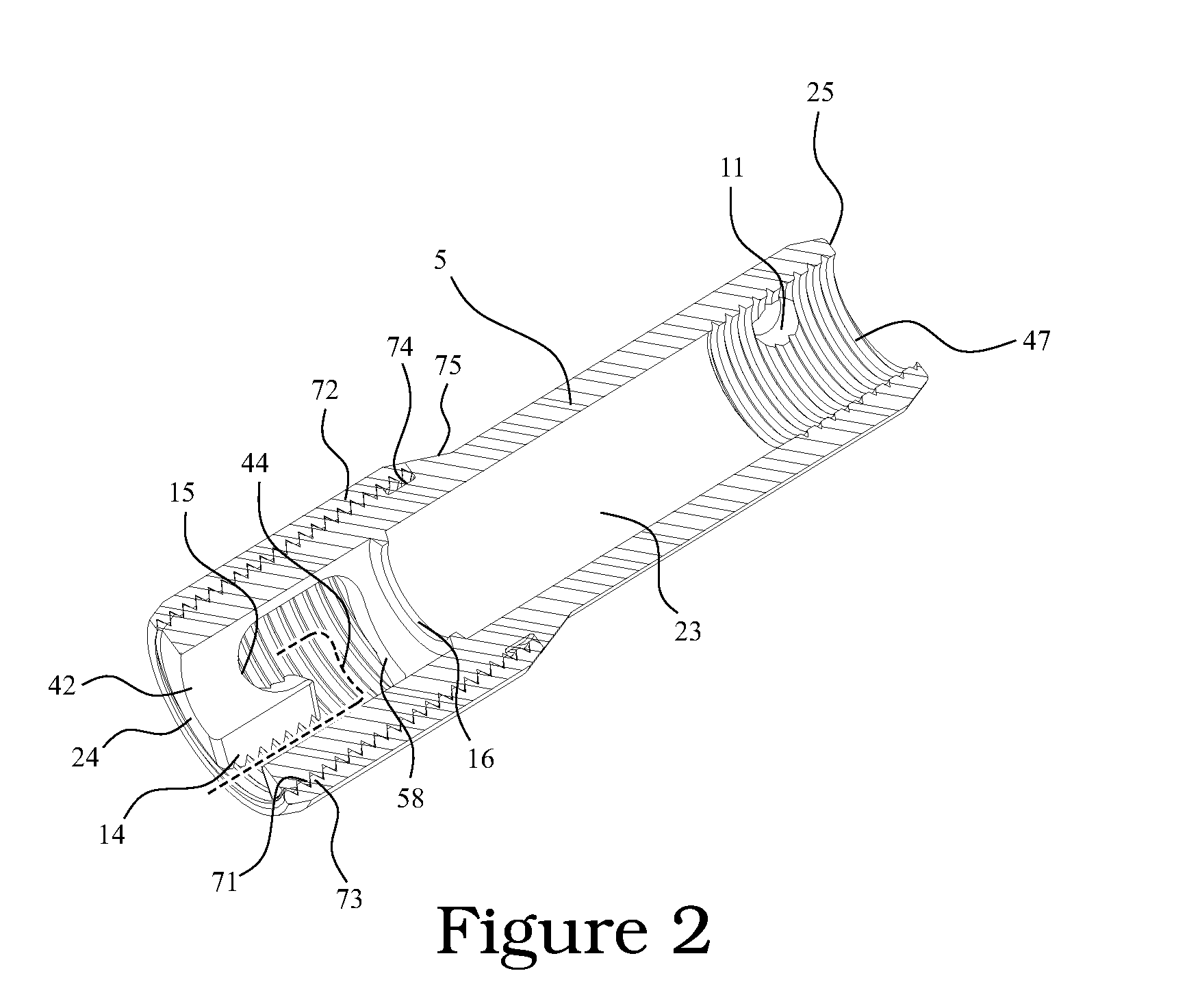Locking quick connect fitting
a quick connection and fitting technology, applied in the direction of rod connection, marine propulsion, vessel construction, etc., can solve the problems of prone to rubbing of single exterior mounting sleeves, catastrophic mast collapse, and lack of secure enough locking device to ensure connectors, etc., to achieve the effect of convenient modularity or easy attachmen
- Summary
- Abstract
- Description
- Claims
- Application Information
AI Technical Summary
Benefits of technology
Problems solved by technology
Method used
Image
Examples
Embodiment Construction
[0036]FIG. 1 displays an exploded view of the present invention. Main insertion pin 1 is fabricated with a threaded section 27, a section 30 which has a diameter stepped down in size preferably below the minor diameter of the threads of the threaded section 27, and an additional section 28 which has been further stepped down in diameter below that of section 30. Clevis shaped head 40 is created by cold working or machining. Hole 31 is drilled through clevis shaped head 40 and an additional hole 12 is drilled through stepped section 30. Jam nut 3 then screws onto threaded shank 27 and knurled hand nut 4 screws onto shank 27 behind jam nut 3. It should be noted that the use of jam nut 3 is optional and its use is only to provide additional security to prevent knurled hand nut 4 from loosening. It should also be noted that clevis shaped head 40 could also consist of a fork or other suitable configuration. Cross pin 2 is then inserted into hole 12 by a press fit or other means which kee...
PUM
 Login to View More
Login to View More Abstract
Description
Claims
Application Information
 Login to View More
Login to View More - R&D
- Intellectual Property
- Life Sciences
- Materials
- Tech Scout
- Unparalleled Data Quality
- Higher Quality Content
- 60% Fewer Hallucinations
Browse by: Latest US Patents, China's latest patents, Technical Efficacy Thesaurus, Application Domain, Technology Topic, Popular Technical Reports.
© 2025 PatSnap. All rights reserved.Legal|Privacy policy|Modern Slavery Act Transparency Statement|Sitemap|About US| Contact US: help@patsnap.com



